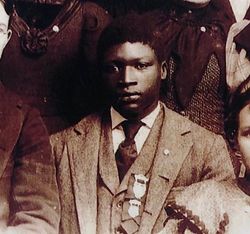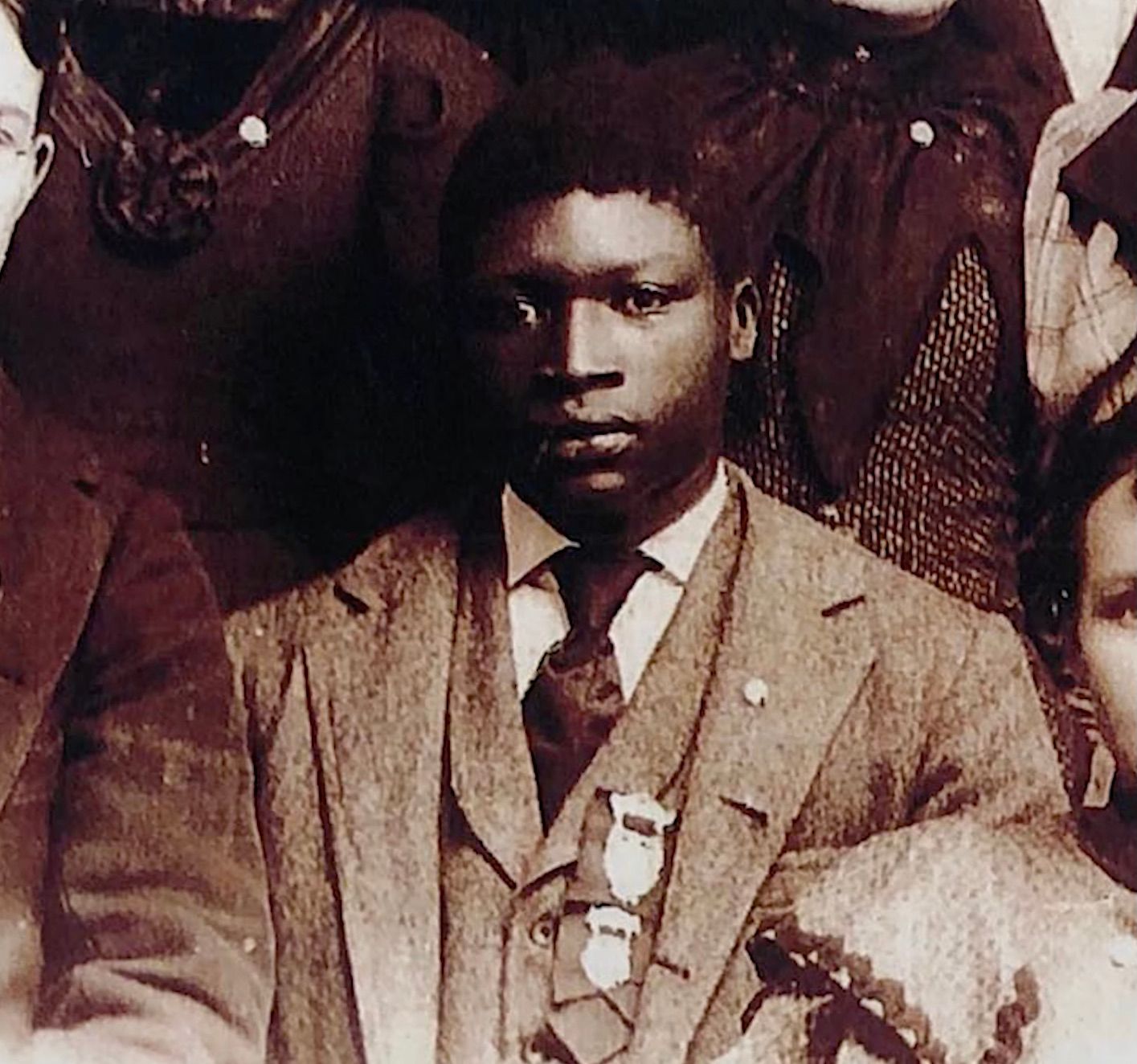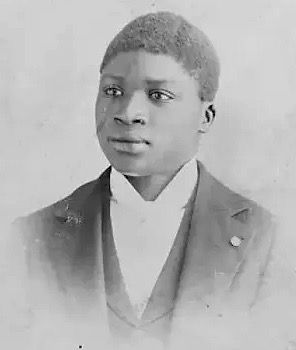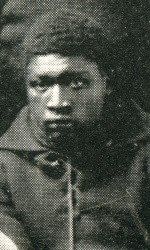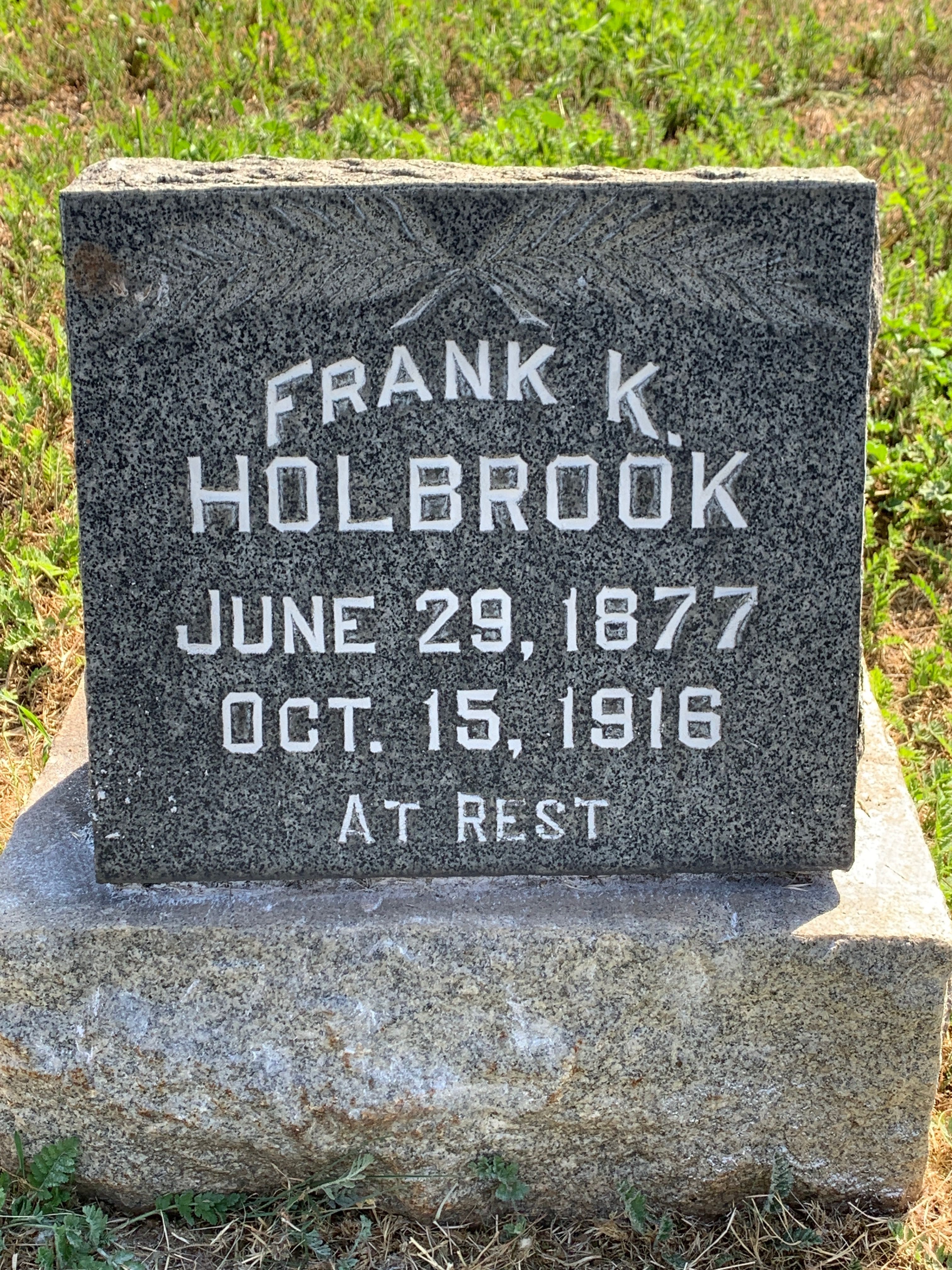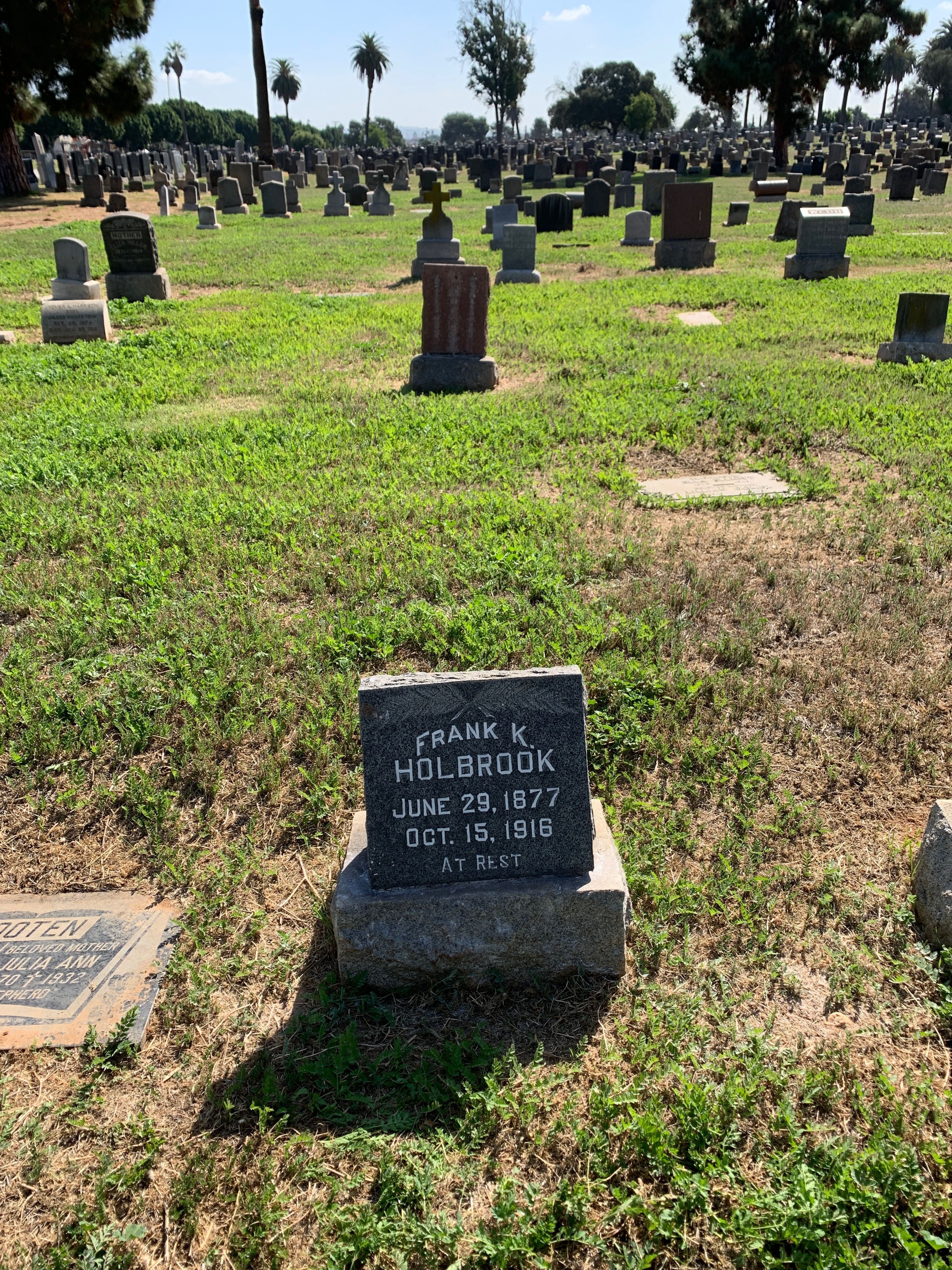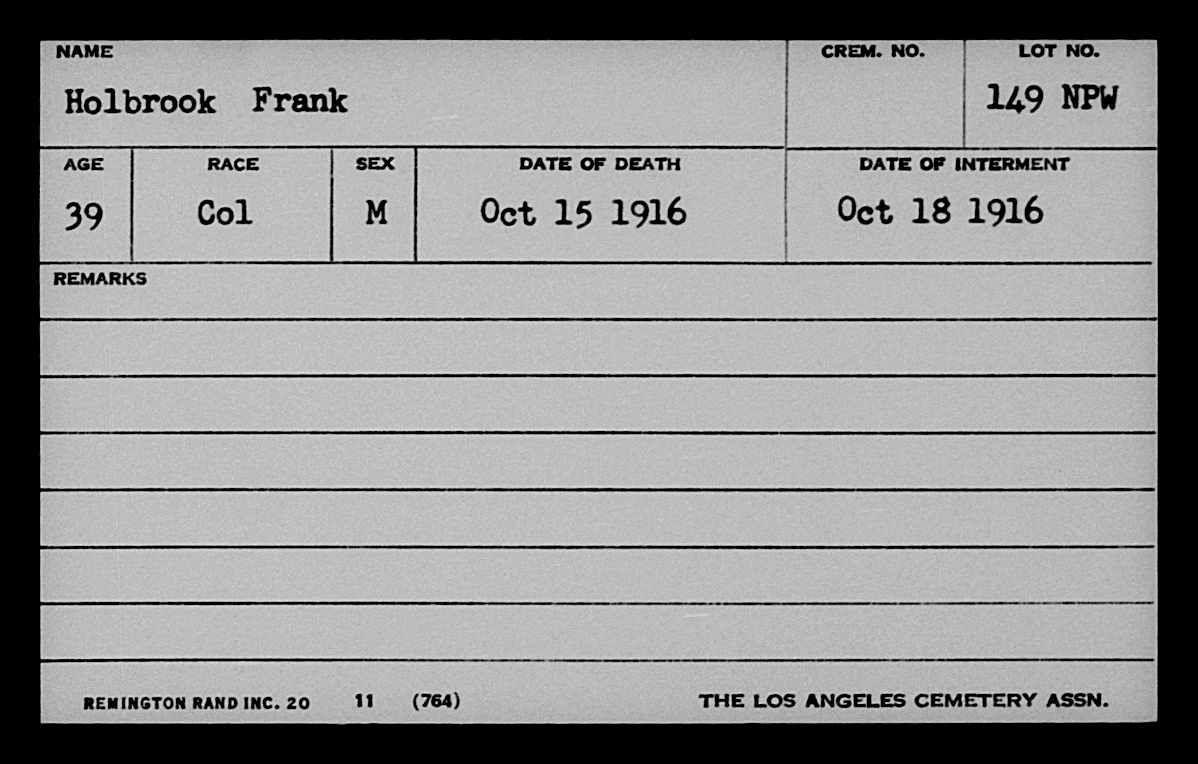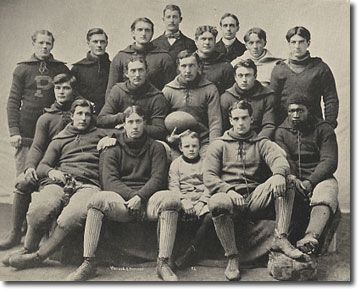Keeping out of other folks’ business is precisely how he was able to fly under the radar and become a star African-American athlete in an era of extreme racial prejudice and segregation. Holbrook first gained athletic acclaim at Tipton High School, where he was a standout in football and track. In his senior year at Tipton in 1895, he led the school to just the third ever Iowa High School State Track Meet. Holbrook helped guide Tipton High to a second-place finish at the state meet, winning the individual state championship in the 50-yard dash and the shot put events. He was also an excellent student, earning above average grades and particularly excelling in math.[4]
Frank Holbrook became the first black graduate of Tipton High School and that fall, he enrolled in a few science courses at the nearby University of Iowa. He was steered to Iowa City by several Hawkeye supporters in Tipton, who provided a fund for his tuition and living expenses. Kinney Holbrook joined the Hawkeye football team in 1895, becoming the first African-American athlete in the history of the University of Iowa and the first documented black college athlete in the history of the state.
1895 was a chaotic year for Hawkeye football – the entire football program teetered on the verge of bankruptcy, and the cancellation of the 1895 season was only staved off by a round of emergency fundraising. Because the program was low on funds, they saved money by not hiring a full-time coach, which led to a very disorganized atmosphere around the team that season.
For his part, Frank Holbrook earned a football letter in 1895 by starting at the left end position. He had a few bright moments, scoring the Hawkeyes’ first touchdown of the year in a 28-0 victory over Parsons College on “a beautiful run”.[5]
But that win was followed by four shutout losses, as the coachless Hawkeyes limped to a 2-5 record. Included in that losing streak was a road loss at Missouri, and Holbrook was caught up in the first publicized racial incident of his college career during his trip. It began when the Hawkeye team boarded a train for Missouri, and the train employees – including the conductor – refused to acknowledge Holbrook’s very presence.[6]
The team train stopped at Cameron Junction in Cameron, Missouri, and the team went to a nearby hotel dining room for dinner. As the Iowa team filed into the dining room, Holbrook was stopped by the landlord and informed that “n—-rs could not eat in that dining room.” Members of the Hawkeye squad told the landlord, “If this colored boy cannot eat with us, we will find a place where he can.” The landlord held firm, and the team left the hotel. The train had to be held until a place was found where Holbrook could eat with his teammates.[7]
But the Missouri game itself, surprisingly, was played without incident in 1895, likely because Iowa simply wasn’t very good. In the 34-0 loss, it was reported that Holbrook “made some good tackles but was not up to his usual form.”[5] The scene would be much different when the two teams played a year later.
Aside from that Missouri trip, Frank Holbrook’s rookie season in 1895 came and went with little fanfare. Since this was before the advent of the forward pass, Holbrook’s end position in those days largely consisted of blocking responsibilities for the backs, which wasted Holbrook’s talents to an extent.[8] His position on the field, the lack of success of the team overall, and the underfunded and disorganized nature of the program resulted in Holbrook’s contributions to the 1895 Hawkeyes being largely overlooked. But 1896 would be a much different story. http://nealrozendaal.com/hawkeyes-revisited/frank-kinney-holbrook/
Contributor: Anonymous (46929129)
Keeping out of other folks’ business is precisely how he was able to fly under the radar and become a star African-American athlete in an era of extreme racial prejudice and segregation. Holbrook first gained athletic acclaim at Tipton High School, where he was a standout in football and track. In his senior year at Tipton in 1895, he led the school to just the third ever Iowa High School State Track Meet. Holbrook helped guide Tipton High to a second-place finish at the state meet, winning the individual state championship in the 50-yard dash and the shot put events. He was also an excellent student, earning above average grades and particularly excelling in math.[4]
Frank Holbrook became the first black graduate of Tipton High School and that fall, he enrolled in a few science courses at the nearby University of Iowa. He was steered to Iowa City by several Hawkeye supporters in Tipton, who provided a fund for his tuition and living expenses. Kinney Holbrook joined the Hawkeye football team in 1895, becoming the first African-American athlete in the history of the University of Iowa and the first documented black college athlete in the history of the state.
1895 was a chaotic year for Hawkeye football – the entire football program teetered on the verge of bankruptcy, and the cancellation of the 1895 season was only staved off by a round of emergency fundraising. Because the program was low on funds, they saved money by not hiring a full-time coach, which led to a very disorganized atmosphere around the team that season.
For his part, Frank Holbrook earned a football letter in 1895 by starting at the left end position. He had a few bright moments, scoring the Hawkeyes’ first touchdown of the year in a 28-0 victory over Parsons College on “a beautiful run”.[5]
But that win was followed by four shutout losses, as the coachless Hawkeyes limped to a 2-5 record. Included in that losing streak was a road loss at Missouri, and Holbrook was caught up in the first publicized racial incident of his college career during his trip. It began when the Hawkeye team boarded a train for Missouri, and the train employees – including the conductor – refused to acknowledge Holbrook’s very presence.[6]
The team train stopped at Cameron Junction in Cameron, Missouri, and the team went to a nearby hotel dining room for dinner. As the Iowa team filed into the dining room, Holbrook was stopped by the landlord and informed that “n—-rs could not eat in that dining room.” Members of the Hawkeye squad told the landlord, “If this colored boy cannot eat with us, we will find a place where he can.” The landlord held firm, and the team left the hotel. The train had to be held until a place was found where Holbrook could eat with his teammates.[7]
But the Missouri game itself, surprisingly, was played without incident in 1895, likely because Iowa simply wasn’t very good. In the 34-0 loss, it was reported that Holbrook “made some good tackles but was not up to his usual form.”[5] The scene would be much different when the two teams played a year later.
Aside from that Missouri trip, Frank Holbrook’s rookie season in 1895 came and went with little fanfare. Since this was before the advent of the forward pass, Holbrook’s end position in those days largely consisted of blocking responsibilities for the backs, which wasted Holbrook’s talents to an extent.[8] His position on the field, the lack of success of the team overall, and the underfunded and disorganized nature of the program resulted in Holbrook’s contributions to the 1895 Hawkeyes being largely overlooked. But 1896 would be a much different story. http://nealrozendaal.com/hawkeyes-revisited/frank-kinney-holbrook/
Contributor: Anonymous (46929129)
Family Members
Sponsored by Ancestry
Advertisement
Advertisement
